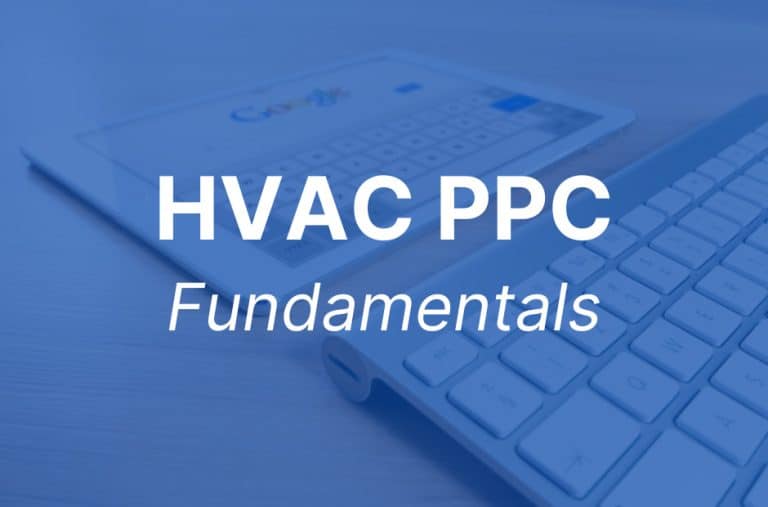The Role of Digital Marketing in the HVAC Industry
In the fast-paced and competitive world of HVAC, the path to digital growth lies in understanding and effectively navigating internet marketing concepts.
With fierce competition and the constant mano-a-mano for visibility, HVAC companies must go beyond single marketing efforts and embrace a holistic HVAC digital marketing strategy.
Enter the marketing funnel.
In this blog post we will explore the funnel fundamentals, each phase and strategy of the funnel, and the one rule you cannot break.

Marketing Funnel Fundamentals
The marketing funnel is a conceptual model that maps out the customer journey from initial awareness to making a purchase decision.
It’s like a roadmap that represents the various stages that potential customers go through, starting from the moment they become aware of a product or service, to the point where they become loyal customers and advocates for a brand.
The funnel consists of four main phases: Awareness, Consideration, Decision, and Loyalty.
Each phase represents a different stage of the customer’s mindset, and nailing your marketing strategies at each step is key to success.
Understanding these concepts will help you design your own successful strategy and deploy the right tools at the right time.
#1 Rule of The Marketing Funnel: Do Not Drain Your Money Down The Funnel
Whatever funnel strategy you design…
Set a clear objective for each strategy and measure your results.
Otherwise, how would you truly know if your strategy is profitable?

Phases of the HVAC Digital Marketing Funnel
The traditional HVAC marketing funnel has four phases: Awareness, Consideration, Decision, and Loyalty.
However, other alternative models such as the Attract, Convert, Engage, Sell, and Connect are also valid and have gained recognition in the digital marketing landscape.
While the specific labels and stages may vary, the core concepts and strategies remain similar.
Awareness
The Awareness stage is the first phase of the marketing funnel, where potential customers realize they may need service for their heating and cooling system, or they are perhaps a bit more distant from their service call, but at a minimum, they understand their unit will require service at some point in the future.
- Example: The "Johnson" family recently purchased a home. They understand their HVAC unit needs to be maintained over time, but they do not require service at this time.
- Your Objective: To remain relevant in your service area with families like the Johnsons and other homeowners, even when they are not searching for your services.
- Your (simplified) tactic: Target an audience of users who recently became homeowners in your local service area, and reach them with HVAC PPC Display or Video ads.
- Common Tools: Facebook & Instagram Ads, Google Ads.
Consideration
During the Consideration stage, potential customers have identified their specific needs and are actively researching and evaluating different HVAC options, often at the same time.
- Example: Mrs. Johnson would like a furnace tune-up, so she uses her mobile phone to search for heating companies near her. She then clicks on the Google results that get her attention and begins comparing websites, reading reviews, and learning more information.
- Your Objective: You must be discovered in Mrs. Johnson's search results in order to be considered. Once discovered, you must also generate trust, credibility, and relevance.
- Your (simplified) tactic: Run a Google Ads campaign for "heating services" and "furnace tune-ups". Position your website as a local and trustworthy option. Measure your results.
- Common Tools: Google Ads and Microsoft Advertising, or HVAC SEO for organic traffic.
Decision
During the Decision stage, potential customers have typically identified a handful of companies they deemed trustworthy and are now ready to compare prices, availability, and perceived quality.
- Example: Mrs. Johnson rules out the websites that did not inspired trust, and keeps 3 local contractors open so she can inquire price and availability for the furnace tune-up.
- Your Objective: To make it easy for Mrs. Johnson to communicate with you.
- Your (simplified) tactic: Make sure your website is lightning fast and that you have several contact methods. An easy-to-complete contact form, a phone number, and even text message widget can improve your chances.
- Common Tools: A modern website builder (WordPress, WIX, GoDaddy), Live Chat options, SMS widgets such as Kenect, Avochato, or Podium.
Loyalty
Your hard work paid off!
Your marketing strategy yielded new customers and you provided them with excellent service.
In the Loyalty phase, continue delighting your customers long after your visit and earn their trust for future needs and even referrals.
- Example: Your team provided neat and friendly service to Mrs. Johnson during the furnace tune-up.
- Your Objective: To collect positive reviews and to continue the relationship with your existing clients.
- Your (simplified) tactic: Send a friendly text message with the link to your Google Business Profile kindly asking for a review. During the holidays, you also send a holiday greeting email as well as your availability.
- Common Tools: SMS platforms such as Kenect, Avochato, or Podium, as well as email platforms such as Mailchimp or Constant Contact.
Conclusion: There is No One-Size-Fits-All Solution
While the customer will naturally progress through the entire funnel, every HVAC contractor has different business needs and access to resources.
Therefore, we recommend identifying your main objective and building your digital strategy through the lens of the marketing funnel.
The objectives may vary.
Some HVAC companies are further advanced and can deploy several tactics and tools for each funnel stage, at any given time.
Others face budgeting limitations and are better off focusing on only one phase at a time.
While other contractors only need to strengthen one specific area of their business.
Given that there is no one-size-fits-all solution, understanding the concepts is more important than following a funnel example and leaning on a sequence too rigidly.









